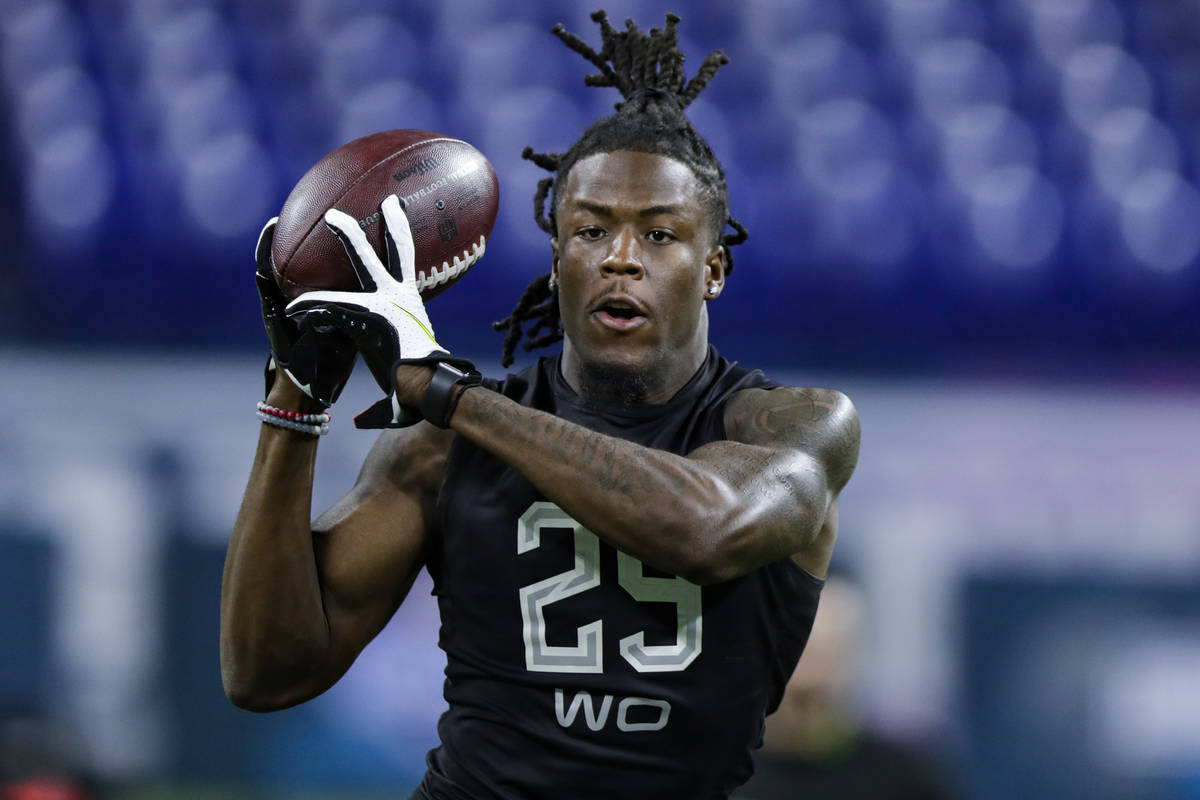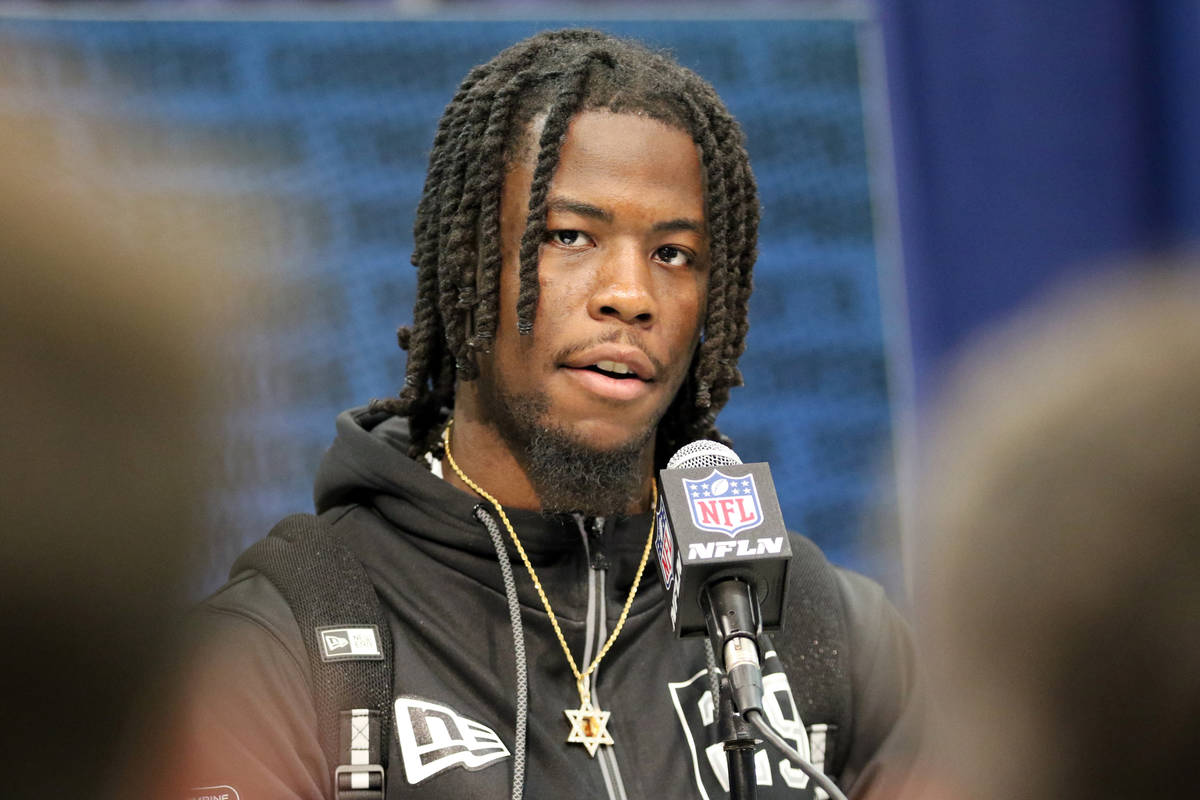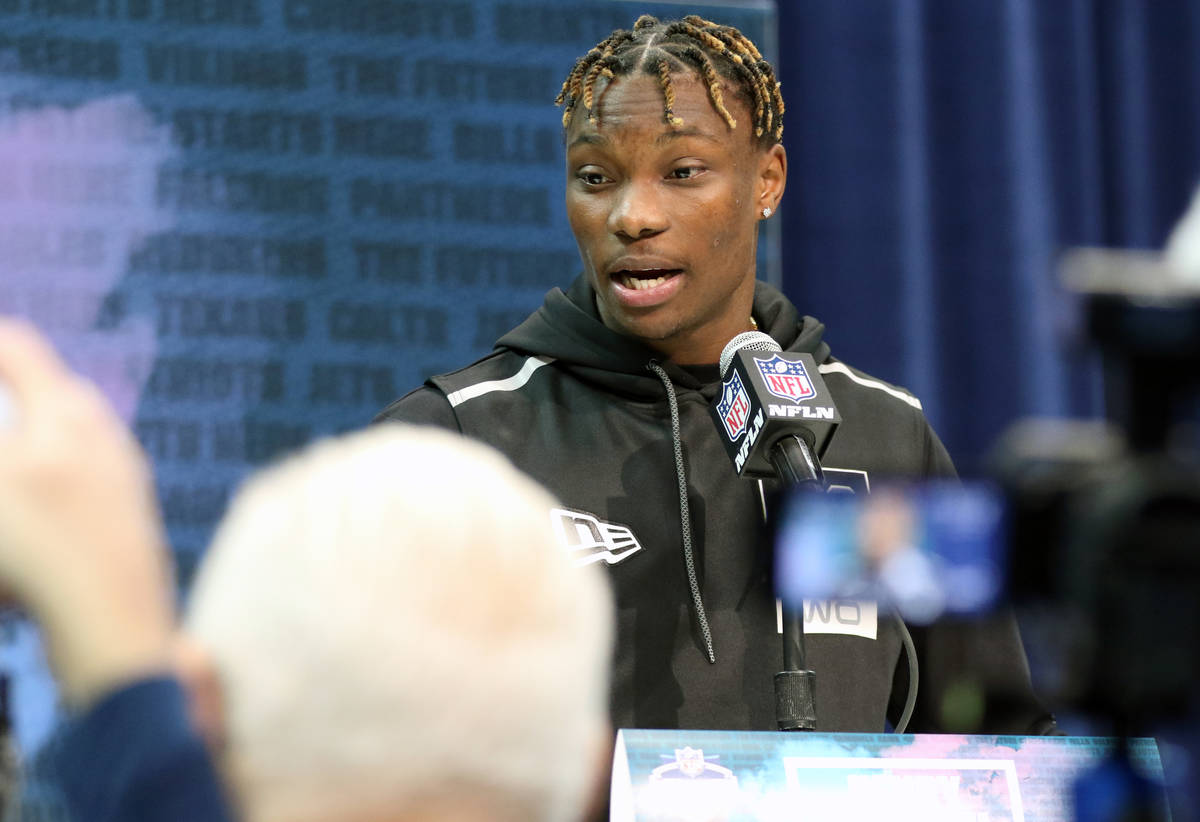Raiders expected to get a big WR addition on draft night
The Raiders signed just one wide receiver during the first surge of free agency. While Philadelphia Eagles veteran Nelson Agholor adds starting experience and could push for significant playing time, he is not the No. 1 wide receiver the Raiders need.
The lack of attention the Raiders paid to the top of the free agent wide-receiver market is a sure signal they prefer to address the concern during the draft. It also signals that they figure the player they want and need will be available to them.
Armed with the 12th and 19th picks in the first round, they are positioned to tap into the upper reaches of a wide receiver draft pool as deep as any in recent memory.
Whoever the Raiders draft, they will join a returning receiving corps consisting of tight end Darren Waller, second-year slot target Hunter Renfrow and Tyrell Williams, whose first season with the Raiders was sabotaged by lingering foot issues.
Agholor has been added to that mix, and while he’s been at his best operating out of the slot, the Raiders hope he can add production while being deployed at all three wide-receiver spots. The Raiders are hopeful Williams’ foot issues are behind him. If so, he has the potential to become a much-needed consistent deep threat. If he isn’t healthy, though, Agholor is a good insurance policy.
Also on the roster are Zay Jones, Marcell Ateman, Rico Gafford and Anthony Ratliff-Williams.
Adding one of the elite wide receiver prospects could take the Raiders’ offense to another level. Should all three of the top prospects be available, it will virtually come down to the preference of general manager Mike Mayock and coach Jon Gruden. All three are extraordinarily talented players.
Jerry Jeudy, Alabama, 6-1, 193
Jeudy is a polished, NFL-ready prospect with elite route-running ability and advanced knowledge of the wide receiver position and defensive coverage schemes. His college tape is textbook-worthy on how to beat defenders off the line of scrimmage, create separation with superior quickness, power, body movement and footwork and attack zone coverages by finding the soft spots in the cover scheme.
“A separating clinic” is how one NFL talent evaluator described his film assessment of Jeudy. “Isaac Bruce-like,” he said of the former Rams wide receiver who will be inducted into the Pro Football Hall of Fame this summer.
Jeudy is also plenty fast with 4.45 speed in the 40-yard dash, evidenced by the 19.3 yards per catch he averaged in 2018 on 68 receptions and 15.1 yards per catch on 77 receptions in 2019. Over the last two years, Jeudy had 145 catches for 2,478 yards and 24 touchdowns.
Between his positional awareness and athletic ability, Jeudy can line up anywhere on the field and be counted on to produce. He will be a handful to cover, either at the line of scrimmage with aggressive man coverage or with zone schemes.
CeeDee Lamb, Oklahoma, 6-2, 198
A dynamic, explosive athlete and electric playmaker with the ball in his hands, Lamb is a dangerous weapon at all three levels and projects as an immediate starter in the NFL. He isn’t as polished a route runner as Jeudy, but he still has time to develop.
Lamb averaged 19.0 yards per catch on 173 career receptions at Oklahoma, including 21.4 on 62 receptions last year.
For now, his size, strength and hands more than make up for any route-running deficiencies. Lamb is a go-getter. He attacks the ball in the air, and his body control, concentration and hands enable him to beat defenders to the point of attack and secure catches in traffic. As he continues to develop, the route running will improve.
Lamb will have to show he can beat NFL press cover corners at the line of scrimmage, something he didn’t see a lot of against Big 12 defenses. That doesn’t mean he can’t do it.
Henry Ruggs, Alabama, 5-11, 188
Ruggs is the fastest prospect among the top three, checking in with a staggering 4.27 40-yard dash at the combine.
Right off the bat, his speed fits right into the Al Davis way of doing things. Also certain to grab the Raiders’ attention are the team-high 18.7 yards per catch Ruggs averaged on 40 receptions and the seven touchdown receptions he made last season.
He has an uncanny ability to switch things up, keeping defenders off balance with a speed differential ranging from fast to much faster. As a result, he’s able to keep defenders guessing and take advantage of either overaggressive or passive coverage.
The threat he creates with his speed — either as a receiver or ball carrier — forces teams to be careful how they deploy and defend on the back end. For instance, knowing Ruggs can beat them deep, teams will be hesitant to stack the box with extra defenders. That will allow Raiders running back Josh Jacobs to operate at a numbers advantage much more often than last year.
Ruggs needs work with his route running and getting off the line of scrimmage against physical man-cover corners. When confronted with that type of coverage — and Louisiana State comes to mind — Ruggs’ effectiveness was negated.
That adjustment could carry over to the NFL, with teams continually challenging him at the line of scrimmage with physical corners. Until Ruggs shows he can consistently beat that kind of coverage, he can expect to see it often.
Contact Vincent Bonsignore at vbonsignore@reviewjournal.com. Follow @VinnyBonsignore onTwitter.


























